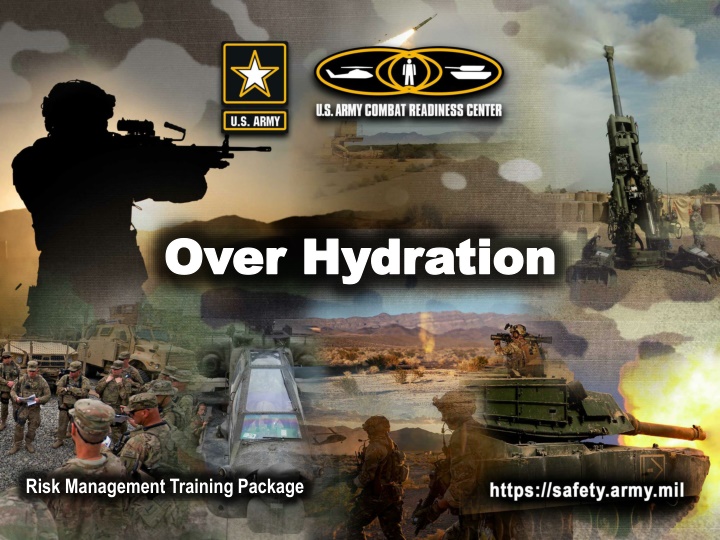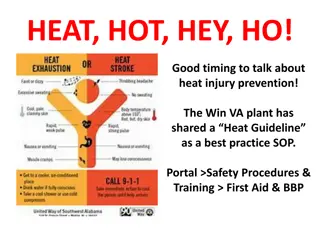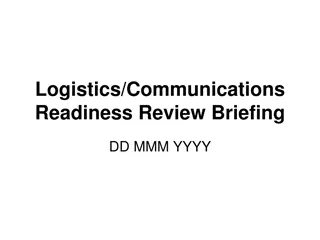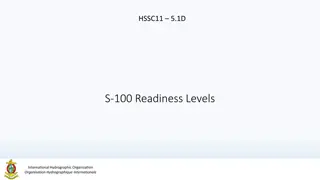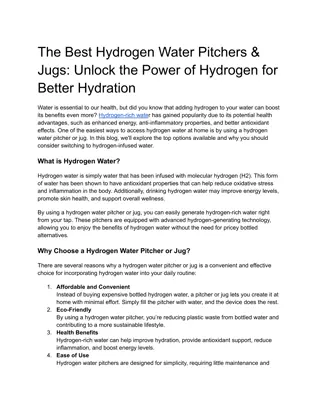Combat Readiness Center - Over Hydration Mishap Risk
The US Army Combat Readiness Center highlights the dangers of over hydration in rigorous physical training scenarios, presenting a tragic case of exercise-associated hypernatremia. Lack of fluid intake monitoring, high stress environments, and unclear fluid intake limits contributed to the mishap. Learn from this incident to prevent such tragedies in future military training.
Download Presentation

Please find below an Image/Link to download the presentation.
The content on the website is provided AS IS for your information and personal use only. It may not be sold, licensed, or shared on other websites without obtaining consent from the author.If you encounter any issues during the download, it is possible that the publisher has removed the file from their server.
You are allowed to download the files provided on this website for personal or commercial use, subject to the condition that they are used lawfully. All files are the property of their respective owners.
The content on the website is provided AS IS for your information and personal use only. It may not be sold, licensed, or shared on other websites without obtaining consent from the author.
E N D
Presentation Transcript
US ARMY COMBAT READINESS CENTER READINESS THROUGH SAFETY Over Hydration Over Hydration Risk Management Training Package US Army Combat Readiness Center (USACRC) & Office of the Director of Army Safety (ODASAF)
US ARMY COMBAT READINESS CENTER READINESS THROUGH SAFETY Mishap Synopsis Mission: Rigorous physical training. After completing rigorous physical training at approximately 0700, a Soldier consumed a lower-than-normal caloric intake breakfast immediately followed by a series of moderate to high-level exertion events. The web-bulb globe temperature levels after breakfast were recorded at heat category III and continued to climb throughout the day reaching category V by 1500 hours. The Soldier continued consuming water at an unknown rate and quantity through the rest of the day s training to address his deteriorating conditions. At approximately 2045, the Soldier vomited a large quantity of water and had a seizure. This initiated the Soldier s evacuation to the nearby aid station and then to a hospital emergency room where the Soldier s condition progressively worsened. The Soldier later died from exercise associated hypernatremia. US Army Combat Readiness Center (USACRC) & Office of the Director of Army Safety (ODASAF)
US ARMY COMBAT READINESS CENTER READINESS THROUGH SAFETY Key Facts The Soldier was in excellent physical condition and had participated in college athletics. Students began at 0400 in heat category III The Soldier was in a high heat and high stress environment. Electrolytes and a lunch meal were issued late in day. There was an unclear understanding on daily upper limit of fluid intake by both Soldiers and their immediate leaders. There was inadequate fluid intake monitoring by the Soldiers and their leadership; Camelbacks were filled often and before being emptied. US Army Combat Readiness Center (USACRC) & Office of the Director of Army Safety (ODASAF)
US ARMY COMBAT READINESS CENTER READINESS THROUGH SAFETY What were some of the hazards the unit should have identified? Could this mishap have been prevented? Is this you? Is this your unit? Is this your chain-of-command? US Army Combat Readiness Center (USACRC) & Office of the Director of Army Safety (ODASAF)
US ARMY COMBAT READINESS CENTER READINESS THROUGH SAFETY For more information and to access all available resources, please visit the USACRC website: https://safety.army.mil/MEDIA/Exportable-Briefings US Army Combat Readiness Center (USACRC) & Office of the Director of Army Safety (ODASAF)
US ARMY COMBAT READINESS CENTER READINESS THROUGH SAFETY US Army Combat Readiness Center (USACRC) & Office of the Director of Army Safety (ODASAF)
